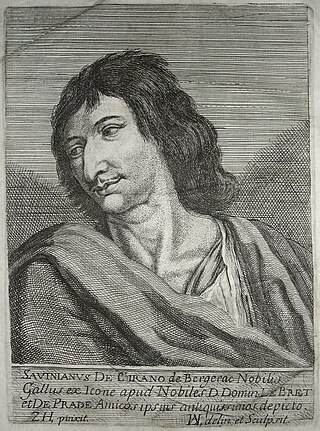Related Research Articles

Savinien de Cyrano de Bergerac was a French novelist, playwright, epistolarian, and duelist.

Ernest Lavisse was a French historian. He was nominated for the Nobel Prize in Literature five times.
Marie Huber was a Genevan writer on theology and related subjects, as well as a translator and editor, at a time when it was rare for a female writer to write about theology.

Ami Boué was a geologist of French Huguenot origin. Born at Hamburg he trained in Edinburgh and across Europe. He travelled across Europe, studying geology, as well as ethnology, and is considered to be among the first to produce a geological map of the world.

The Revue des deux Mondes is a monthly French-language literary, cultural and current affairs magazine that has been published in Paris since 1829.

Alfred Nicolas Rambaud was a French historian.

Henry Laurens is a French historian and author of several histories and studies about the Arab-Muslim world. He is Professor and Chair of History of the Contemporary Arab world at the Collège de France, Paris.

Charles Pierre Claret, comte de Fleurieu was a French Navy officer, explorer, hydrographer and politician. He served as Minister of the Navy under Louis XVI, and was a member of the Institut de France. He was brother to botanist Marc Antoine Louis Claret de La Tourrette.

Marie-Eugène-Melchior, vicomte de Vogüé was a French diplomat, Orientalist, travel writer, archaeologist, philanthropist and literary critic.
The history of Middle Eastern newspaper publishing goes back to the 19th century. The Nahda was an important period for the development of newspaper publishing in the Middle East. During this period, a shift from government and missionary publishing to private publishing occurred. Especially in Egypt and Lebanon, newspapers became intertwined with daily life. Consequently, the rise of newspaper publishing impacted nationalism in Arab countries.
Among the many Ottoman provinces that were created during the centuries-long history of the Ottoman Empire, some existed for relatively short amounts of time, either because they were ceded to foreign powers, obtained independence, or were simply merged with other provinces.

The language of the court and government of the Ottoman Empire was Ottoman Turkish, but many other languages were in contemporary use in parts of the empire. Although the minorities of the Ottoman Empire were free to use their language amongst themselves, if they needed to communicate with the government they had to use Ottoman Turkish.

Takvim-i Vekayi was the first fully Turkish language newspaper. It was launched in 1831 by Sultan Mahmud II, taking over from the Moniteur ottoman as the Official Gazette of the Ottoman Empire. With the beginning of the Tanzimat reform period, Takvim-i Vekayi produced versions in multiple language editions. It ceased publication in 1878, resuming in 1891–2, before being closed again. It resumed in 1908 until around 1922. In the 1831-1878 period it published a total of 2119 issues - an average of slightly less than one a week.
Alexandre Leblanc de Ferrière,, was an 18th–19th-century French playwright, journalist, printer, publisher and writer.
Nicolas Vatin is a French epigrapher and historian, specializing in the study of the Ottoman Empire. His brother, François Vatin, is a professor of sociology at the Paris West University Nanterre La Défenser.
There were multiple newspapers published in the Ottoman Empire.

Adib Ishaq was an important Syrian literary figure of nineteenth-century Arab Nahda.
Events in the year 1844 in Belgium.
Events in the year 1861 in Belgium.
References
- 1 2 3 État présent de l'empire ottoman, p. 168.
- ↑ L'ami de la religion, p. 316.
- 1 2 Strauss, Johann. "Language and power in the late Ottoman Empire" (Chapter 7). In: Murphey, Rhoads (editor). Imperial Lineages and Legacies in the Eastern Mediterranean: Recording the Imprint of Roman, Byzantine and Ottoman Rule (Volume 18 of Birmingham Byzantine and Ottoman Studies). Routledge, 7 July 2016. ISBN 1317118448, 9781317118442. Google Books PT192.
- ↑ Nemeth, Titus (2017-07-20). Arabic Type-Making in the Machine Age: The Influence of Technology on the Form of Arabic Type, 1908–1993. Brill. p. 29. ISBN 978-90-04-34930-8.
- 1 2 État présent de l'empire ottoman, p. 169.
- ↑ Annuaire des deux mondes : histoire générale des divers États, p. 814.